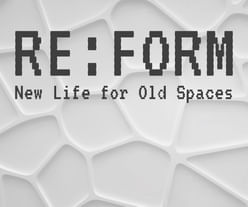
Snøhetta has been selected as the winner of a competition to rebuild a mountain refuge nestled in the heart of the Pyrenees National Park in France. The news is joined by designs of what will be the new Refuge de Barroude, which was destroyed in a fire ten years ago.
The building will provide a new stop-off point for hikers on the Haute Route des Pyrénées, a long-distance trail that follows the French and Spanish border. It will also serve as a reception and support center for National Park staff. The refuge was designed in a restrained yet modern way in order to limit its environmental footprint. It seems to naturally curl up from the landscape but also contrasts its surroundings through its materiality of stone, wood, and aluminum. As noted by the architects, “...the project’s concept strikes a delicate balance between integration and visibility.”

The refuge is located outside of the areas where the endemic flora and fauna are protected. This position was carefully chosen to take advantage of the existing topography, which allows for two levels to be constructed without the need for excessive earthworks. The building’s bioclimatic design is evident through its compact size that minimizes the amount of façade exposed to the elements.
The structure features a distinct planted roof, which follows the lines of the landscape. It also stands out through its protective envelope made of recycled aluminum, which shelters the outside spaces from the prevailing winds.

The structure’s layout is split between two main functional areas: the living spaces, which open to the alpine surroundings and Lake Barroude, and the bedrooms, which are positioned to the north, facing the ridge. This configuration allows for privacy to be managed at the refuge as the most open spaces, such as the dining hall and kitchen, progressively shift to the most protected spaces, such as the dormitories.

The winter dormitory, located on the lower ground floor, with direct access from outside, is exclusively for hikers and park staff. For hikers, there are eight- and six-person dormitories, in addition to eight-person dormitories adapted for winter use. The refuge also has rooms for the warden, his assistants, and park maintenance staff.

The shelter minimizes its footprint on its environment through the use of low-carbon materials and reduced construction impacts. The refuge’s shell and structure are made of recycled wood and aluminum, respectively, with local stone used for the base. In addition to reducing the carbon footprint associated with transporting materials, the use of local stone ensures integration with the mountainous context.

The building’s compact size also serves to reduce energy consumption for heating and cooling. Solar panels and biomass heating will provide electricity and hot water, further reducing the refuge’s reliance on fossil fuels. Drinking water will be supplied by a tank storing water from a nearby spring, and waste water will be treated by infiltration, with no impact to the environment.
The new Refuge de Barroude is set to break ground in 2025, with completion expected for 2027.

The Last Nuclear Bomb Memorial / Edition #5
Register by Thu, Jan 16, 2025
Submit by Wed, Feb 19, 2025

Re:Form – New Life for Old Spaces
Register by Wed, Jan 22, 2025
Submit by Tue, Sep 2, 2025

Kinderspace: Architecture for Children's Development #2
Register by Thu, Jan 16, 2025
Submit by Mon, Jun 16, 2025

The Architect's Chair / Edition #3
Register by Wed, Jan 15, 2025
Submit by Tue, Feb 18, 2025
No Comments